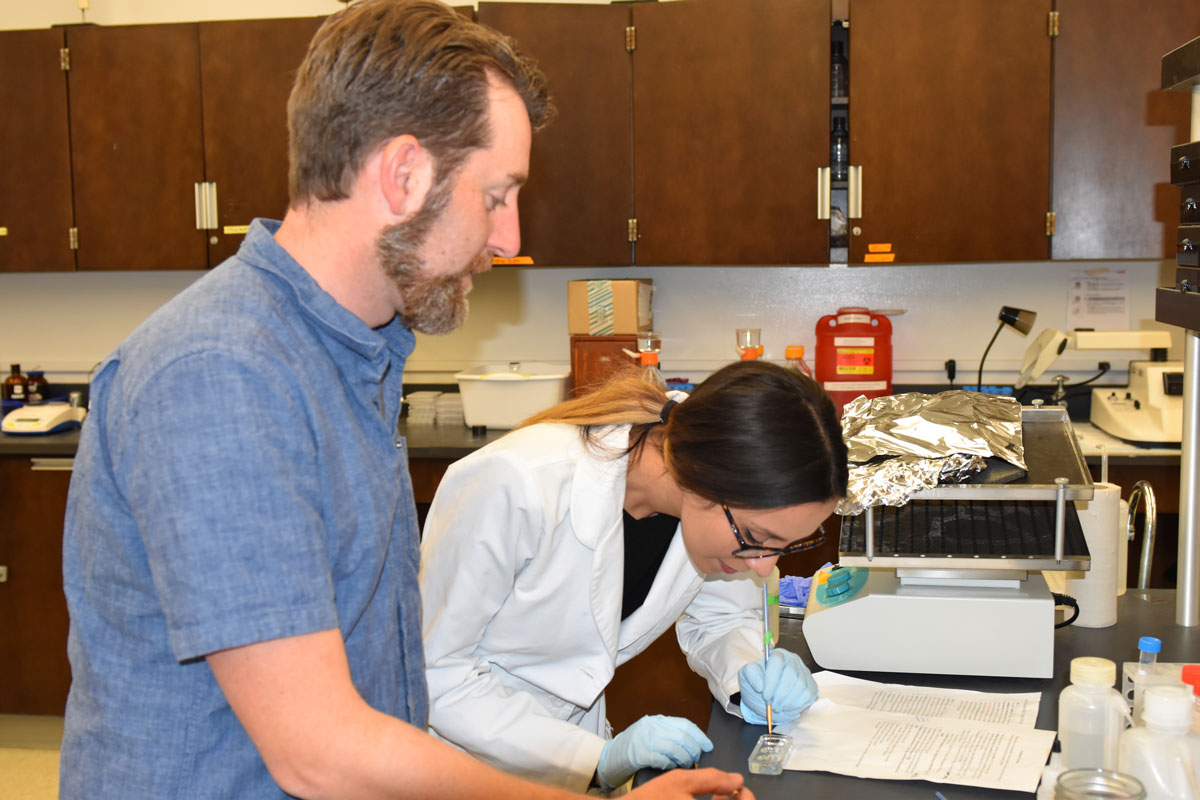Research into Food’s Effect on Circadian Rhythms May Have Uncovered a “Fat Switch”
At Cal Poly Pomona a new National Institutes of Health (NIH) SCORE grant is helping to answer the question, “What makes our internal clock tick?” The grant will support research into how food may affect circadian rhythms. Much research has been done on how light impacts our biological clock but the research being done at Cal Poly Pomona is looking at the connection between the timing of meals and wakeful activity. The term food anticipatory activity (FAA) describes the wakefulness and activity that animals exhibit in anticipation of scheduled meals. Mice show FAA even when their meal schedule is modified to take place during normal sleeping hours suggesting that food as well as light affects circadian rhythm.
The principal investigator on the grant is Assistant Professor Andrew Steele. Steele’s lab currently includes eight undergraduates and three graduate students. The NIH grant will allow them to continue their important work which addresses the question, “How are activity and physiological rhythms entrained by feeding?” Steele said “our work suggests that the neurotransmitter dopamine is crucial to establish food entrained circadian rhythms and that it is acting via dopamine receptor 1 neurons in the dorsal striatum. This research problem has important biomedical implications for obesity and anorexia as well as basic science interest in circadian time keeping and the neurobiology of behavior.” If researchers can understand how food timing affects metabolic clocks it will lead to a better understanding of how the brain controls behavior.
This research at Cal Poly Pomona was initially supported with a grant from the Whitehall Foundation. The NIH SCORE grant will ensure that the research can continue. SCORE is a capacity building program that supports institutions with a stated mission or history of training nationally underrepresented students in the biomedical sciences.
In the lab, researchers have deleted genes from mice in a cell specific manner, allowing them to remove the type 1 dopamine receptor. It’s been found that animals that lack the D1 receptor fail to show food anticipatory activity. Another amazing, yet still preliminary finding is that the mice without D1R did not gain weight when placed on a high fat diet as compared to a control group. The hypothesis is that the D1R expressing neurons provide critical inputs to the circadian system and also control body weight homeostasis. The research seeks to determine which neurons are relevant in mediating the food clock and ultimately to expand that understanding to a circuit level to map the entire process and related systems involved. Developing a circuit level picture of what’s going in the brain could pave the way toward new approaches for treating obesity and anorexia.
